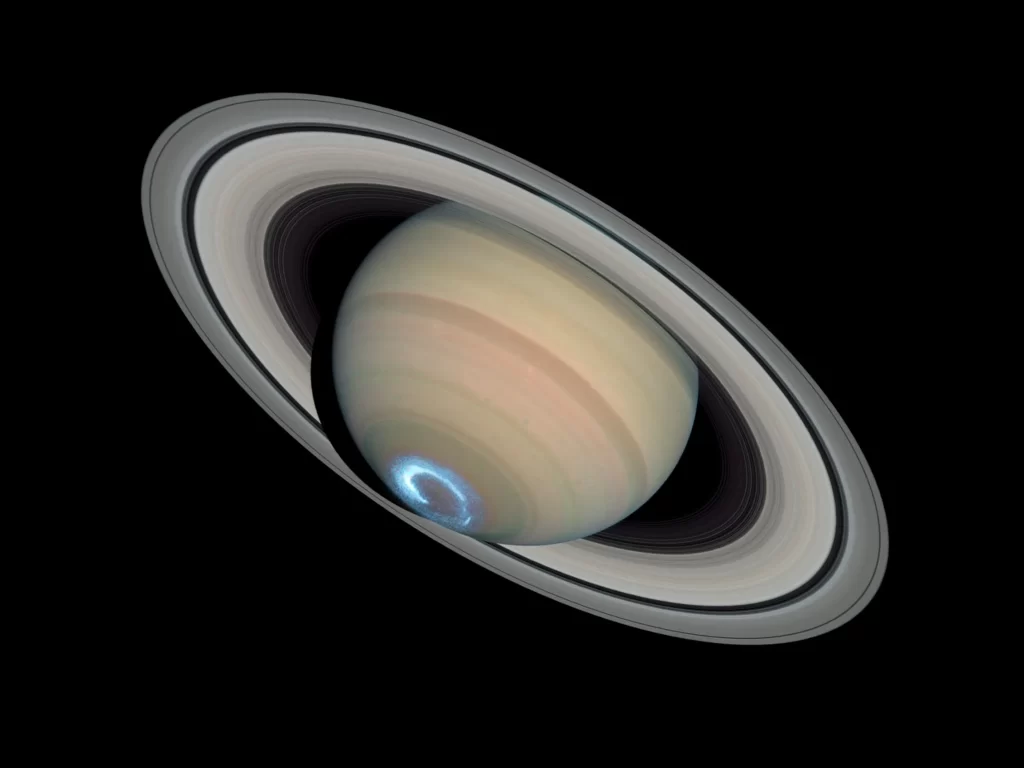The Hubble Space Telescope, NASA’s pioneering observatory, has spent a decade closely monitoring the outer planets of our solar system: Jupiter, Saturn, Uranus, and Neptune. As part of the Outer Planet Atmospheres Legacy (OPAL) program, these observations have unveiled significant atmospheric changes, transforming our understanding of these gas giants. Presented at the American Geophysical Union’s December meeting in Washington, D.C., these findings shed light on the complex weather systems and unique characteristics of the outer planets.

The OPAL Program: A Window into Planetary Atmospheres
The Outer Planet Atmospheres Legacy (OPAL) program has been instrumental in advancing planetary science. Launched to monitor long-term atmospheric changes on gas giants, OPAL has provided high-resolution images and data that enable scientists to track weather patterns, storm formations, and seasonal variations. This comprehensive survey contributes to over 60 scientific publications, offering valuable insights into the dynamics of these distant worlds.
Jupiter: Shifting Storms and Stable Seasons
The Great Red Spot: A Storm in Transition
Jupiter, the largest planet in our solar system, remains a focal point of OPAL’s observations. One of its most striking features, the Great Red Spot, has undergone significant changes. This enormous storm, which spans three times the size of Earth, has shown alterations in size and structure over the years. Scientists continue to debate its longevity, but Hubble’s data offers a clearer understanding of its evolving dynamics.
Atmospheric Bands: Patterns of Stability
Jupiter’s equatorial bands, characterized by contrasting light and dark stripes, have also been closely observed. These bands reflect powerful jet streams and atmospheric flows. Notably, Jupiter’s axial tilt of just three degrees results in minimal seasonal changes, making it unique compared to Earth’s 23.5-degree tilt, which drives pronounced seasonal variability.
Saturn: Seasons of Change and Ring Phenomena
Seasonal Variations
Saturn’s atmospheric conditions showcase dramatic shifts influenced by its 26.7-degree axial tilt. Over its 29-year orbit around the Sun, the planet experiences pronounced seasonal transitions. OPAL’s decade-long data collection highlights variations in cloud depth and color as seasons change, enriching our understanding of Saturn’s weather dynamics.
Mysterious Ring Spokes
Hubble has also documented elusive phenomena known as “ring spokes” in Saturn’s iconic rings. These dark, radial features are believed to result from seasonal changes, possibly influenced by the planet’s magnetic field. Originally observed during NASA’s Voyager missions, Hubble’s consistent monitoring has helped refine our understanding of their occurrence and behavior.
Uranus: A Polar Cap Brightening
Axial Tilt and Seasonal Extremes
Uranus stands out with its extreme axial tilt of 98 degrees, causing its poles to face the Sun for extended periods during its 84-year orbit. This unique orientation creates exaggerated seasonal effects. Hubble’s observations reveal a gradual brightening of the northern polar cap, a phenomenon linked to the planet’s approach to its summer solstice in 2028.
Tracking Long-Term Changes
The brightening of Uranus’ polar region has offered critical data for understanding its atmospheric chemistry and solar interactions. These observations emphasize the importance of continuous monitoring to capture slow-moving but significant transformations.
Neptune: Storms and Solar Cycles
Dark Storms: Formations and Dissipations
Neptune, the outermost gas giant, is characterized by powerful storms. Hubble’s decade-long survey has recorded the emergence of dark storms, including one first observed in 2018 and another in 2021. These storms, some larger than the Earth, eventually dissipate as they approach the planet’s equator, offering clues about Neptune’s unique atmospheric dynamics.
Solar Cycle Influences
Interestingly, OPAL data suggests a connection between Neptune’s atmospheric conditions and the solar cycle. This linkage underscores the potential influence of solar activity on planetary weather patterns, even at vast distances from the Sun. These insights deepen our understanding of the interplay between solar and planetary systems.
The Broader Implications of Hubble’s Observations
Hubble’s decade of monitoring has revolutionized our understanding of the outer planets. From documenting dynamic weather systems to uncovering links between solar activity and planetary atmospheres, the OPAL program has highlighted the importance of continuous observation. These findings not only enhance planetary science but also inform future missions, including the upcoming James Webb Space Telescope, which promises even deeper exploration of our solar system.
FAQs
1. What is the OPAL program?
The Outer Planet Atmospheres Legacy (OPAL) program is a NASA initiative to monitor long-term atmospheric changes on Jupiter, Saturn, Uranus, and Neptune using the Hubble Space Telescope.
2. What changes were observed on Jupiter by the Hubble Space Telescope?
Hubble observed shifts in the size and structure of Jupiter’s Great Red Spot and variations in its equatorial atmospheric bands.
3. Why is Uranus’ polar cap brightening?
The northern polar cap of Uranus is brightening as the planet approaches its summer solstice in 2028, likely due to increased solar exposure.
4. What are Saturn’s ring spokes?
Ring spokes are dark, radial features in Saturn’s rings influenced by seasonal changes and possibly its magnetic field. These phenomena were first observed during Voyager missions and are now monitored by Hubble.
5. How does the solar cycle affect Neptune?
Neptune’s atmospheric conditions, including storm activity, appear to be influenced by the solar cycle, showcasing a connection between solar activity and planetary weather systems.




